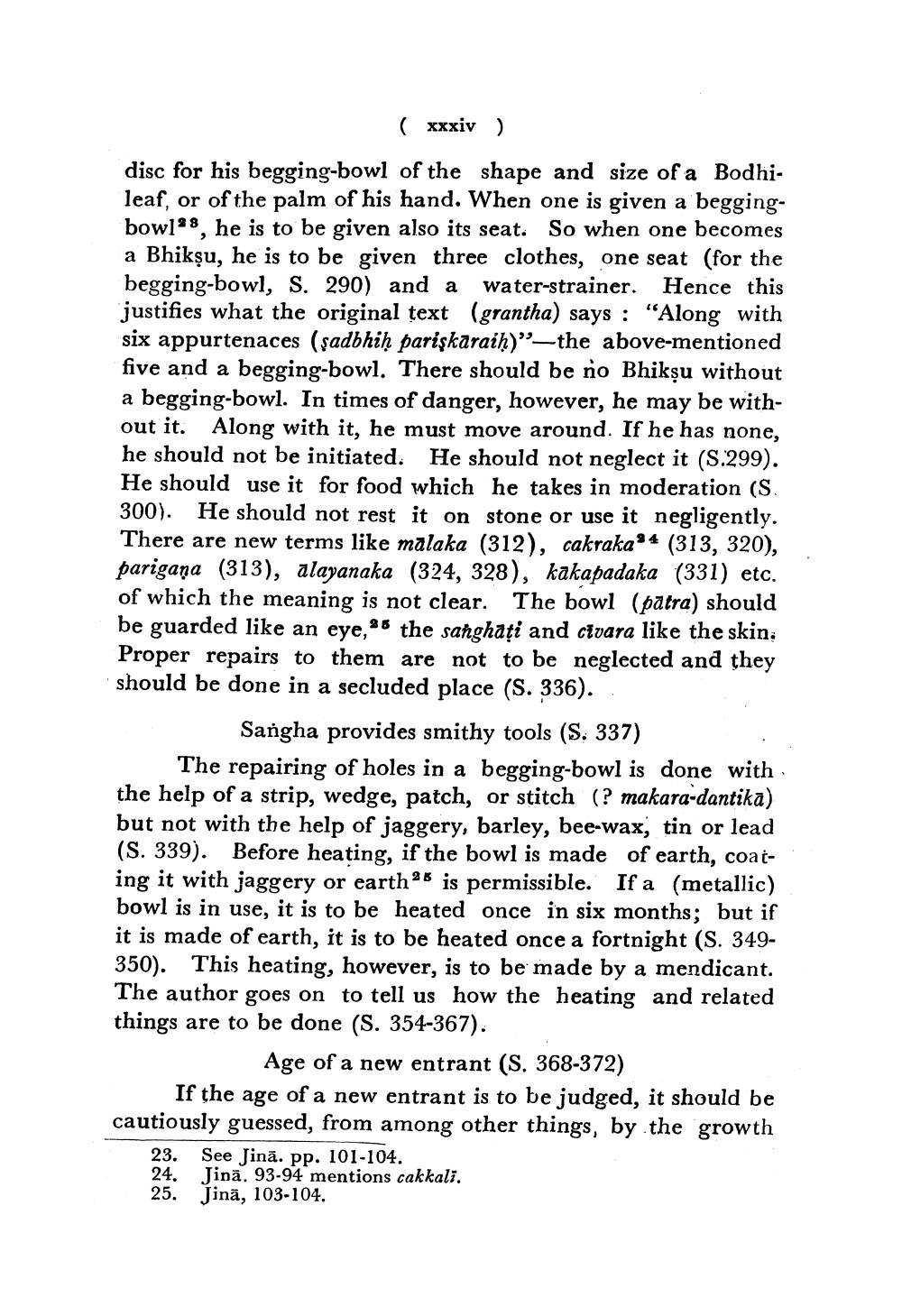________________
( xxxiv) disc for his begging-bowl of the shape and size of a Bodhileaf, or of the palm of his hand. When one is given a beggingbowl'8, he is to be given also its seat. So when one becomes a Bhikṣu, he is to be given three clothes, one seat (for the begging-bowl, S. 290) and a water-strainer. Hence this justifies what the original text (grantha) says : "Along with six appurtenaces (şadbhiḥ parişkaraiḥ)”—the above-mentioned five and a begging-bowl. There should be no Bhikṣu without a begging-bowl. In times of danger, however, he may be without it. Along with it, he must move around. If he has none, he should not be initiated. He should not neglect it (S.299). He should use it for food which he takes in moderation (S. 300). He should not rest it on stone or use it negligently. There are new terms like malaka (312), cakraka$4 (313, 320), parigana (313), alayanaka (324, 328), kakapadaka (331) etc. of which the meaning is not clear. The bowl (patra) should be guarded like an eye, 35 the sanghați and civara like the skin, Proper repairs to them are not to be neglected and they should be done in a secluded place (S. 336).
Sangha provides smithy tools (S. 337) The repairing of holes in a begging-bowl is done with the help of a strip, wedge, patch, or stitch (? makara-dantika) but not with the help of jaggery, barley, bee-wax, tin or lead (S. 339). Before heating, if the bowl is made of earth, coaiing it with jaggery or earth 25 is permissible. If a (metallic) bowl is in use, it is to be heated once in six months; but if it is made of earth, it is to be heated once a fortnight (S. 349350). This heating, however, is to be made by a mendicant. The author goes on to tell us how the heating and related things are to be done (S. 354-367).
Age of a new entrant (S. 368-372) If the age of a new entrant is to be judged, it should be cautiously guessed, from among other things, by the growth
23. See Jinā. pp. 101-104. 24. Jinā. 93-94 mentions cakkali. 25. Jinā, 103-104.




